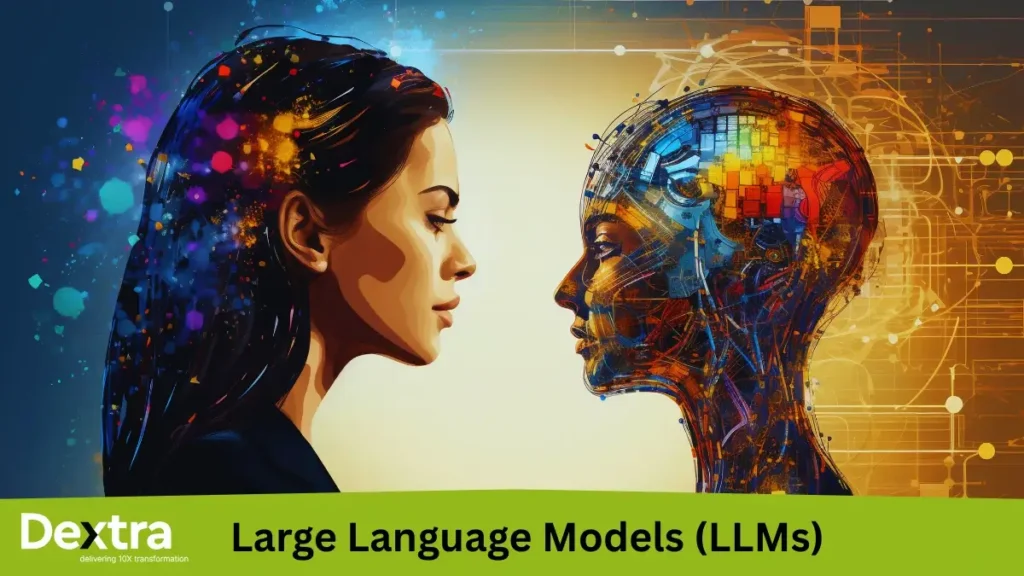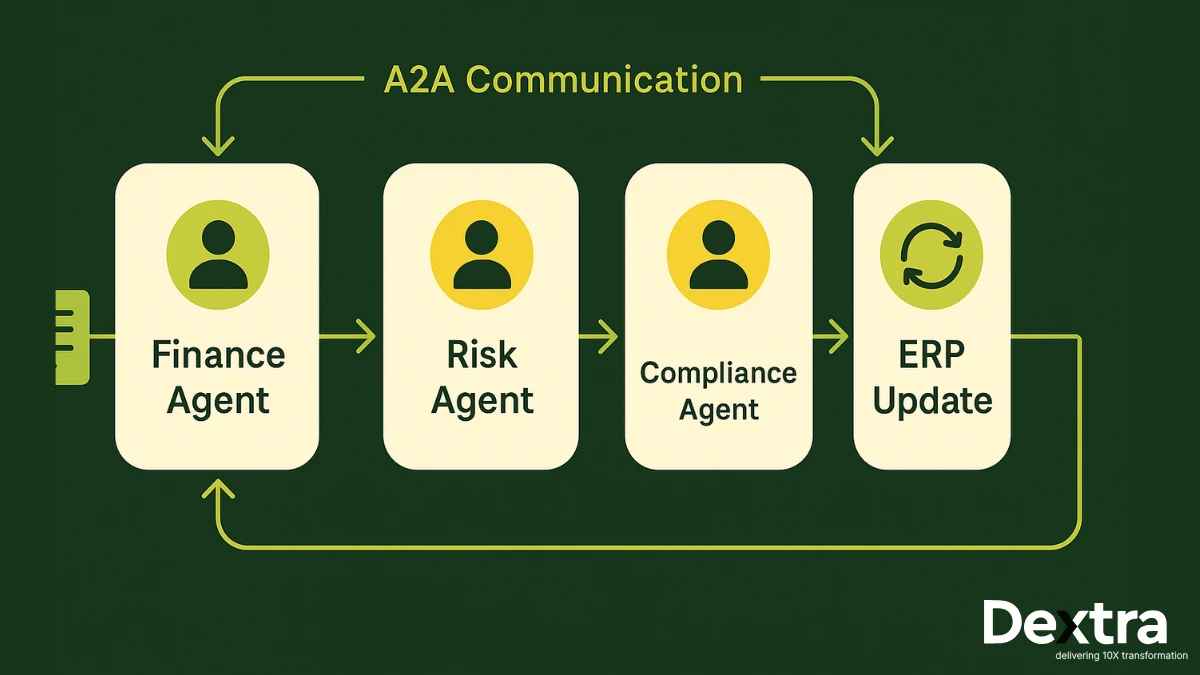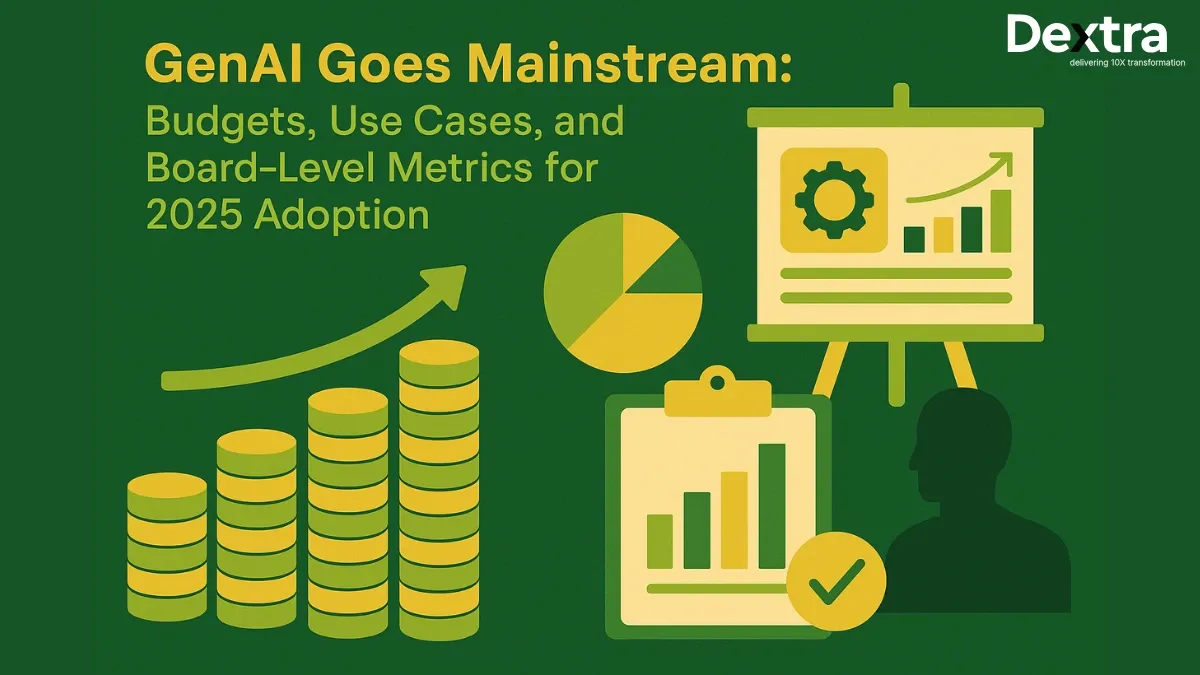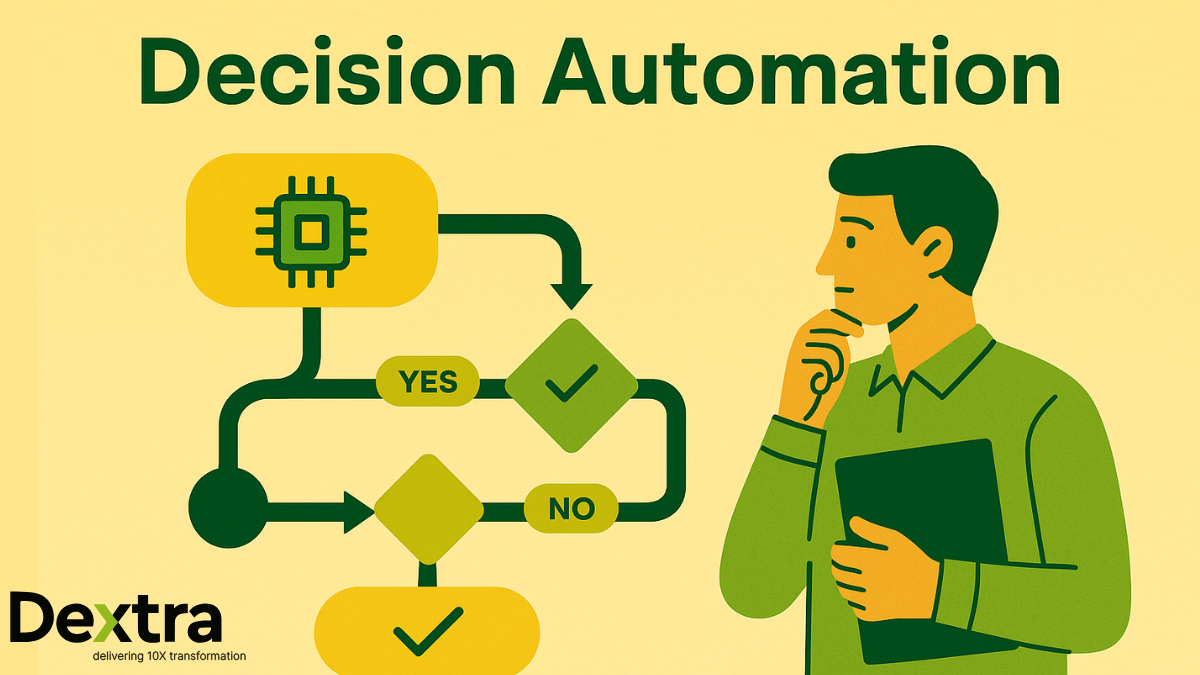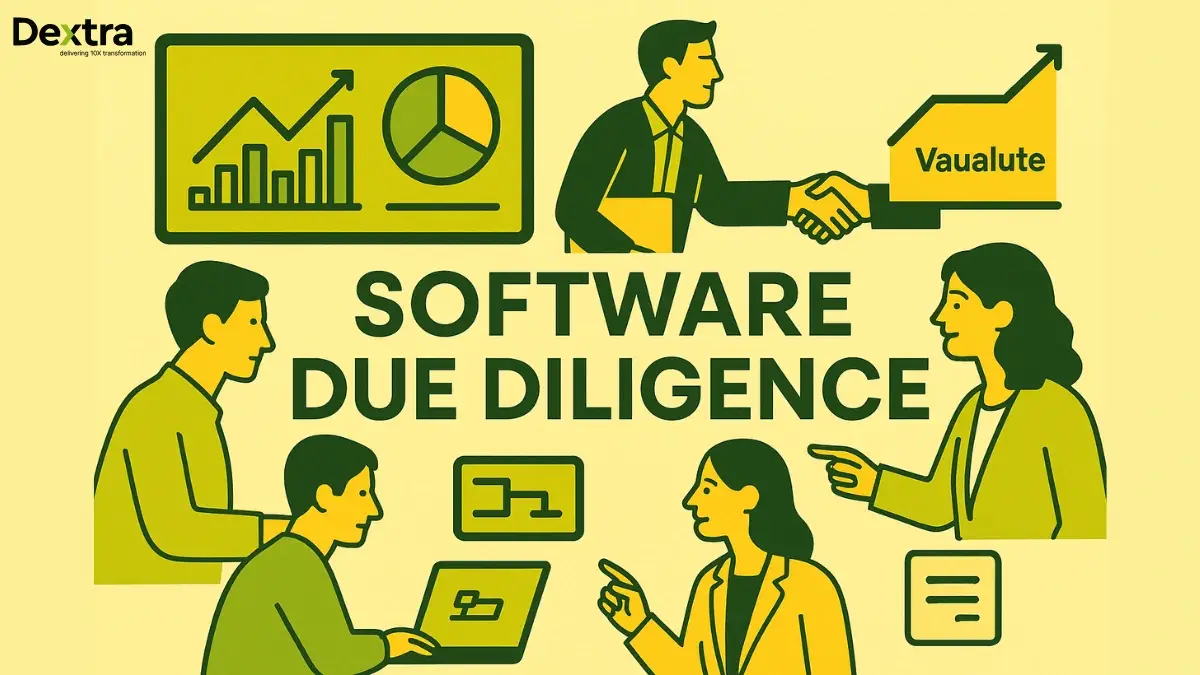Imagine having a friend who’s read every book, every research paper, every tweet, blog, and Reddit thread on the internet. Now imagine this friend can recall it all instantly, explain the most complex ideas in plain English, and even help you write emails, summarize reports, or brainstorm business ideas—without ever getting tired.
Sounds unreal? Meet the magic behind that friend: a Large Language Model, or LLM.
Whether you’re writing an important message, decoding technical jargon, or just curious about how AI can hold a conversation that feels weirdly human, LLMs are the brains behind the brilliance. From chatbots like ChatGPT to the voice assistants in your phone, they’re quietly powering the way we interact with technology every day.
In this beginner’s guide by Dextralabs, we’re going to break it all down—what LLMs are, how they work, where they’re used, and why they matter. No fluff. No jargon. Just a friendly walkthrough of one of the most powerful innovations shaping the future of AI.
Let’s get started.
What Are Large Language Models?
What is llm? LLMs are powerful AI systems designed to understand and generate human language. You can think of them as advanced machines that have been trained on huge amounts of text, including books, websites, and such. They are based on something called the transformer architecture and they process language differently in a way that’s similar to how humans learn.
LLMs differ from older AI systems in that they do not need explicit rules about language—they learn from context. They learn language naturally by analyzing billions and billions of words and they learn grammar, syntax, and meaning. Another difference between LLMs and previous models is that they are capable of simultaneously analyzing vast quantities of data, which speeds up training.
Some of the biggest LLMs today have hundreds of billions of parameters. For example, GPT-3 by OpenAI has 175 billion parameters, which allows it to comprehend and produce text that seems natural and aware of the context.
Why Are LLMs Important?
LLMs are incredibly flexible, with the ability to do a range of different tasks. Asking questions, writing, translating, conversing, and many more are just a few things they are able to do. This flexibility means they are changing the ways humans are interacting with AI, and they could drastically change industries that involve content creation, customer service, and more!
But here’s the catch: LLMs aren’t perfect. They’re still learning, and sometimes they get things wrong. However, the way they predict and generate text from just a few prompts is already impressive.
To give you an idea of their power, models like GPT-3 can handle tasks that involve millions of words, processing hundreds of pages at once. That’s not something older AI systems could even come close to doing.
How Do LLMs Work?
Large Language Model (LLM) are a powerful mix of natural language processing (NLP) and machine learning algorithms. When training an LLM, it takes in tons of text data. Over time, the model learns to predict the next word in a sentence. The task may seem simple, but it is incredibly powerful when done at scale. But how exactly does that happen? Let’s break it down step by step.
1. Training on Massive Text Data
The journey starts with feeding the model an enormous dataset made up of books, articles, websites, and just about any text you can imagine. This helps the model learn the patterns, structures, and relationships within language—like how words are used, what they mean, and how they connect in context.
2. Breaking Text Into Tokens
Next, all that text is split into smaller units called tokens. These tokens can be individual words, parts of words, or even characters. They’re the basic building blocks the model will use to understand and generate language.
3. Turning Tokens Into Numbers (Embeddings)
Since machines don’t understand words the way humans do, each token is transformed into a numerical representation, known as an embedding. These embeddings help the model grasp not just the word itself but also its meaning and context based on how it appears across different texts.
4. Analyzing Text with Transformer Architecture
These embeddings are then passed through a complex neural architecture called a Transformer. This is where the magic happens. The encoder part of the transformer analyzes the entire sequence of tokens and builds a contextualized understanding of the input.
5. Generating Text with a Decoder
Once the input is understood, the decoder takes over to generate new text, one token at a time. Whether it’s completing a sentence, answering a question, or creating something entirely new, it does this based on what it has learned about language patterns.
6. Fine-Tuning for Specific Tasks
Finally, LLMs can be fine-tuned for specific purposes like language translation, text summarization, code generation, and more. This is done by adjusting the internal settings—known as the weights and biases—of the model’s neural network.
Understand the Working of LLM with an Example
Let’s face it—what is llm in artificial intelligence or machine learning jargon can get confusing. So instead of diving straight into algorithms and embeddings again, let’s simplify things with a fun example.
“Imagine a super-smart parrot named Polly“
But Polly isn’t just any parrot—she lives in a lively town filled with chatter, stories, and endless conversations. From the moment she wakes up, she listens carefully to the people around her talking, joking, arguing, and storytelling.
Polly’s Training = An LLM’s Learning
As Polly listens, she starts picking up on words, phrases, and how they’re used. She notices not just what people say, but how they say it. Slowly, she begins to understand the structure of conversations—where questions end, how answers begin, when to pause, and what certain phrases mean in different contexts.
This is exactly how a Large Language Model (LLM) learns.
Just like Polly breaks conversations into understandable pieces, an LLM breaks down text into tokens—tiny chunks of words or characters. These tokens are easier for the model to process and understand.
Polly Understands Context
Over time, Polly doesn’t just mimic words—she starts understanding their meaning. If someone says “It’s raining cats and dogs,” she doesn’t look outside for animals. She gets that it means it’s pouring rain. This is how an LLM builds contextual understanding—by learning from millions of examples and spotting patterns in how words are used.
Polly Starts Talking
Eventually, Polly becomes fluent. She can answer questions, tell short stories, or even mimic different tones and accents—all because she’s listened and learned. Likewise, an LLM can now generate responses—text that’s relevant, natural, and makes sense in the flow of a conversation.
Whether it’s translating languages, summarizing long articles, or writing poems, an LLM—just like Polly—relies on what it has learned to generate meaningful responses.
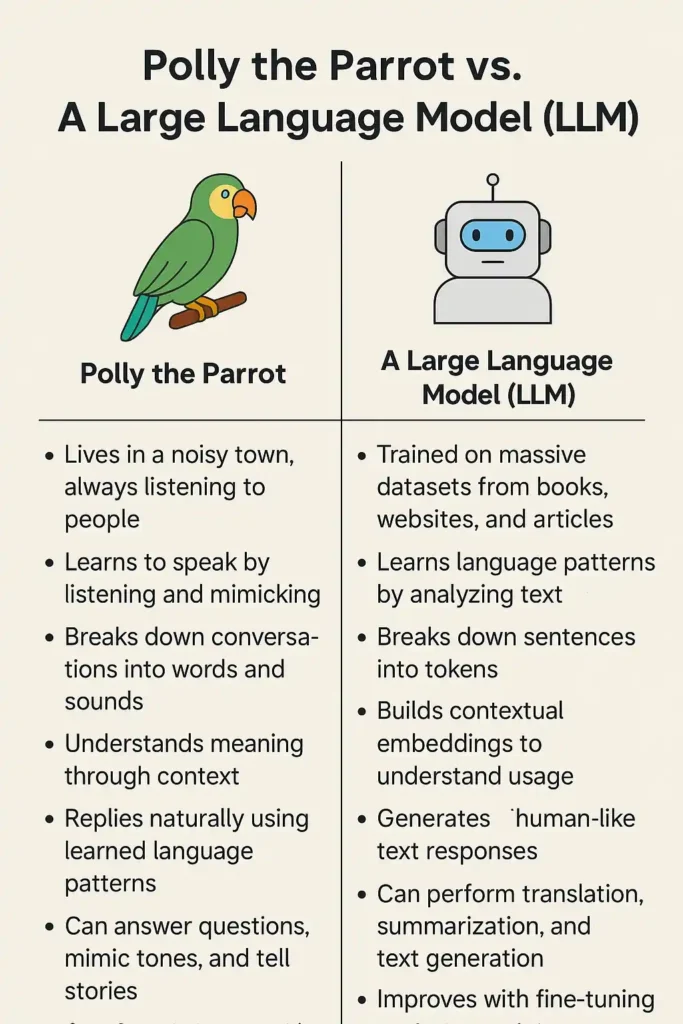
So next time you chat with an AI tool or get a smart response from your digital assistant, just imagine Polly sitting on a perch, nodding her head and replying with uncanny fluency.
Because at its core, an LLM is simply a very well-trained listener—and an even better speaker.
Real-World Applications of LLMs:
LLMs are being used in a wide range of applications, from creating content to improving customer support. According to Polaris Market Research, the global large language model (LLM) market is anticipated to grow from $7.79 billion in 2025 to $130.65 billion by 2034, amounting to a CAGR of 36.8%. Let’s look at some of the most exciting use cases or llm applications:
1. Custom LLMs for Business:
Companies can create custom LLMs that are fine-tuned for their unique needs. For example, customer support teams could train an LLM to understand and respond to the questions they face, constantly improving efficiency and decreasing response times.
2. Content Generation & Automation:
Whether it’s drafting emails, summarizing reports, or writing blog posts, LLMs can handle all sorts of content generation tasks. They can even help develop marketing strategies by analyzing current market trends and customer behavior.
3. Chatbots & Virtual Assistants:
LLMs are fuel for chatbots and virtual assistants so they can answer questions and are capable of having natural conversations. For example, AI tools can provide customer support allowing companies to save time and money while providing a better user experience.
4. Healthcare:
In the healthcare industry, LLMs have already been utilized in medical transcribing, analyzing patient data, and providing potential diagnoses based on an individual patient’s report. They are being utilized to help with drug discovery and medical image analysis, which vastly improves critical processes by speeding up key areas while also assisting doctors in making more informed decisions.
5. Search Engines:
LLMs are also changing how search engines work. Instead of just linking to web pages, LLMs can generate more accurate search results by understanding and summarizing information from various sources. This makes searches faster and more relevant.
How LLMs Can Help Your Business Grow?
If productivity and efficiency Improvements are at the top of your list, LLMs can be a force multiplier for your organization. Large Language Models can take care of repetitive tasks, allowing your team to spend time on something more strategic. By adding an LLM to your organization’s products/services, you can provide a much higher-quality experience for your users. AI models can analyze feedback on how users feel about the products or services and help to provide a framework for what to do as a next step when improving the product for your user group.
In summary, LLMs can save you time, improve your products/services, and grow your business – if used correctly.
Final Thoughts
In nearly every industry, large language models are expanding the scope of what is possible for AI. They’ve already found a place in industries like healthcare, customer service, and content creation. As an emerging technology, we’ll likely see even more groundbreaking applications in the future.
hope you have understand many things about “what is a large language models”. If you’re even considering using LLMs within your business, then now is the time to figure out how they operate and how to fit them into your strategy. The AI future is promising, and LLMs are leading the front.
Ready to Build an AI-Ready Workforce?
Partner with Dextralabs to train your engineers using AI-powered learning that’s fast, personalized, and scalable.
Book Your Free AI ConsultationFAQs on Large Language Models:
What is a Large Language Model (LLM)?
A Large Language Model (LLM) is an advanced type of AI trained on massive amounts of text data. It understands and generates human-like language, making it capable of answering questions, writing content, translating text, and much more.
Is ChatGPT an LLM?
Yes, ChatGPT is an LLM developed by OpenAI. It’s built on the GPT (Generative Pre-trained Transformer) architecture and is designed to have natural, human-like conversations.
What are some examples of LLMs?
Popular LLMs include:
– ChatGPT (OpenAI)
– Gemini (Google)
– Claude (Anthropic)
– LLaMA (Meta)
– Mistral
Each has its own strengths and use cases, from chatbots to coding assistants.
What’s the difference between LLM and AI?
AI is a broad field that includes everything from robotics to computer vision. LLMs are a specific type of AI focused on language tasks—think of them as the “language brains” inside chatbots, virtual assistants, and writing tools.

